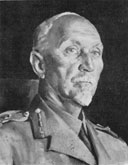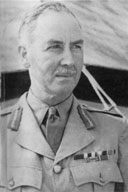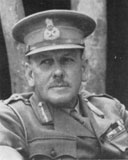
1
South Africa Declares War
On Sunday, 3 September 1939, there came the announcement broadcast by Mr. Neville Chamberlain, the British Prime Minister, that Great Britain and Nazi Germany were at war. France declared war the same day and the Australian and New Zealand governments associated themselves with Britain. Canada would follow suit only on 10 September.
Within an hour of Mr. Chamberlain's speech, telephones were ringing in the homes of Cape Garrison Artillery officers and men. By 7 o'clock that evening the guns at Wynyard Battery covering Table Bay and at Queen's Battery, Simonstown, had been prepared for action with mixed detachments of Permanent Force and Cape Garrison Artillery gunners and a sprinkling of Special Service Battalion youths who were being rapidly instructed in the simpler duties on the guns.* There was no sign of H.M.S. Erebus,† which was to have been anchored in Table Bay to provide 15-inch gun protection for Cape Town.
Next morning crowds gathered in Parliament Street, Cape Town. The Senate Bill--immediate cause for summoning Parliament at this particular time--was quickly disposed of and the Prime Minister, General Hertzog, rose to make a statement on the world crisis. All day the debate continued on a motion proposed by General Hertzog that the House approve and accept as the policy of the Government of the Union that 'the existing relations between the Union of South Africa and the various belligerent countries will, in so far as the Union is concerned, persist unchanged and continue as if no war is being waged; upon the understanding, however, that the existing relations and obligations between the Union and Great Britain, or any other member of the British Commonwealth of Nations, in so far as such relations or obligations result from contractual undertakings relating to the Naval base at Simonstown, or from its membership in the League of Nations, or in so far as such relations and obligations would result impliciter from the free association of the Union with other members of the British Commonwealth of Nations, shall continue unimpaired and shall be
* See Appendix I for developments leading to South Africa's taking over of responsibility for the coastal defences of Simonstown.
† As a result of a request from Mr. Winston Churchill in a letter to General Smuts dated 29 October 1939, the Erebus, which was then ready to sail for Cape Town, was retransferred to the Royal Navy (The Second World War, by Winston S. Churchill (Cassell), London, 1948. vol. 1, app. 11, p. 588 )




